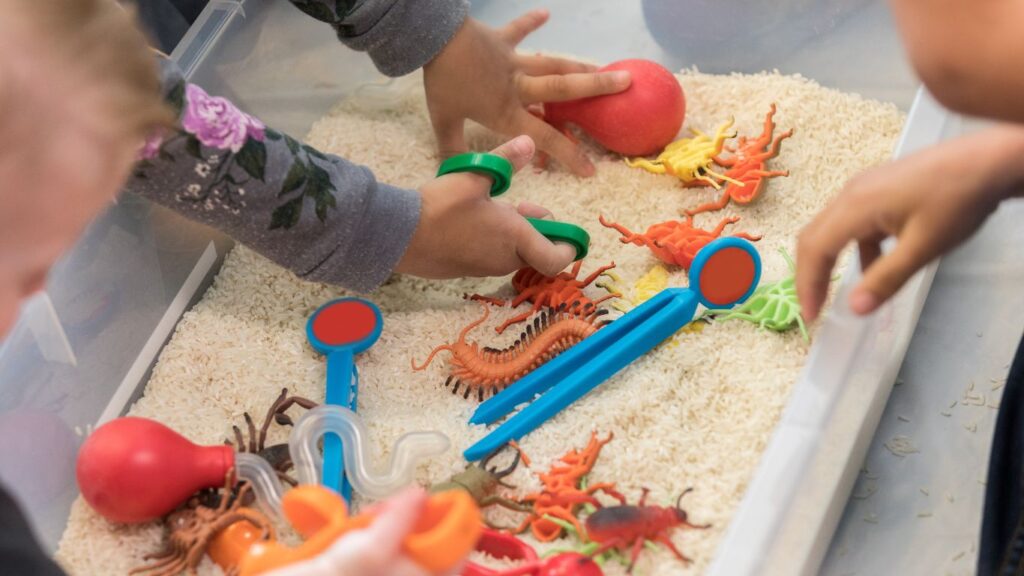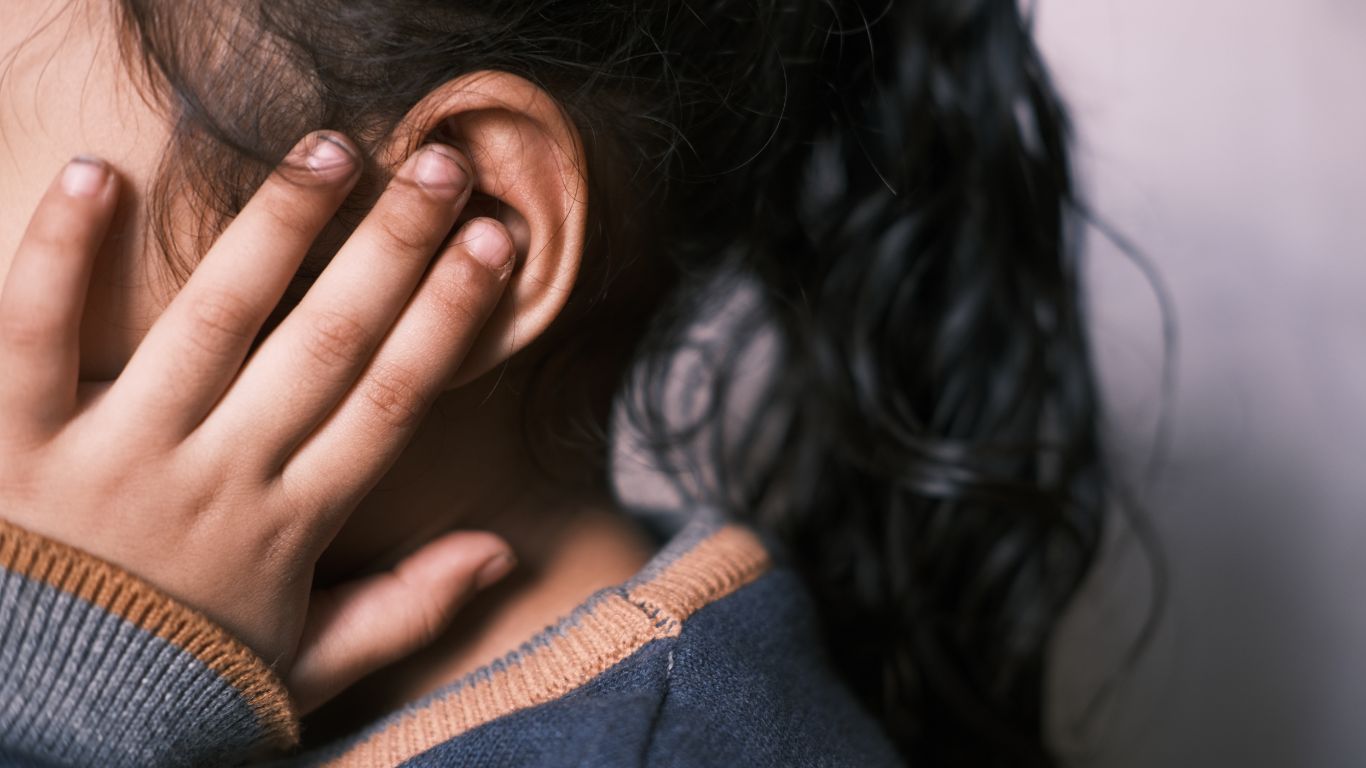Sensory Processing Disorder often coexists with autism. Here we briefly explore its impact and strategies to support affected children.
What If the World Felt Like Too Much- All the Time?
Imagine a child sitting in a classroom.
To the teacher, they’re squirming. To their peers, they’re “overreacting.” To the casual observer, they might seem defiant or distracted.
But inside that child’s body?
The buzz of the fluorescent lights is deafening. The scratch of the pencil on paper feels like nails on a chalkboard. The tag in their shirt might as well be a cactus. And that tap on the shoulder from a classmate? It might feel like a punch.
This is the reality of Sensory Processing Disorder (SPD)- a condition that often coexists with autism and can shape nearly every experience a child has.
And unless you’ve lived it- or parented through it- it’s hard to grasp just how much it can affect a child’s ability to connect, learn, and thrive.
Let’s Get Clear: What Is Sensory Processing Disorder?
Sensory Processing Disorder occurs when the brain has trouble receiving and responding to information from the senses.
That includes:
- Touch
- Sound
- Sight
- Taste
- Smell
- Movement (vestibular)
- Body awareness (proprioception)
In a typical brain, this information gets sorted automatically. But for children with SPD, the brain can either overreact, underreact, or misinterpret these inputs. It’s like the sensory control panel is wired differently.
There Are Three Main Types of SPD:
- Sensory Modulation Disorder – Difficulty regulating responses to sensory stimuli (e.g., overreacting to touch or not noticing pain).
- Sensory Discrimination Disorder – Trouble distinguishing between different types of sensory input (e.g., not knowing how hard they’re squeezing a crayon).
- Sensory-Based Motor Disorder – Challenges with balance, coordination, and planning movements.
How Common Is It in Autism?
Sensory challenges are not a side issue in autism—they’re central.
According to the CDC, more than 90% of autistic children exhibit some degree of sensory processing difference. The DSM-5 even includes sensory reactivity as a diagnostic criterion for autism spectrum disorder.
And yet, this part of the autism experience is often misunderstood- or worse, dismissed.
Because when a child runs out of a room, refuses a texture, or melts down during a loud event, it can look like behavior. But it’s not about misbehavior- it’s about misunderstood neurology.
What Sensory Processing Looks Like in Real Life
Let’s paint the picture:
- A child covers their ears when a fire truck passes- not because they’re being dramatic, but because the sound physically hurts.
- Another child craves pressure and movement, crashing into furniture or jumping repeatedly.
- One refuses certain clothing textures- not because they’re picky, but because the fabric feels unbearable.
- Some children might seem “aloof” or unbothered- even when they fall down or get hurt- because they’re under-responsive to pain or touch.
The truth is, what you see on the outside often doesn’t match what’s happening on the inside.
The Real Impact: Learning, Emotions, and Relationships
When a child struggles to process sensory input, it doesn’t just affect their comfort- it affects their entire ability to engage with the world.
Learning:
A child who is overwhelmed by sensory input cannot focus.
Imagine trying to do a math worksheet while a siren is blaring next to your head. That’s what reading might feel like for a child with SPD in a noisy classroom.
Emotional Regulation:
Sensory overload leads to meltdowns- not because the child is “being bad,” but because their system is maxed out.
Social Skills:
Kids with SPD might avoid group play or struggle with transitions. This can make them appear distant or disinterested- even when they want to connect.
This can lead to mislabeling, misdiagnosis, or even social exclusion.
What the Research Says
The latest science reinforces how critical it is to address sensory challenges early and effectively:
+ A 2021 study in Frontiers in Integrative Neuroscience found that autistic children with high sensory sensitivities were more likely to experience anxiety, aggression, and functional impairments in daily living (Frontiers, 2021).
+ Research published in The American Journal of Occupational Therapy highlights that early sensory integration therapy can significantly reduce anxiety and improve daily functioning in autistic children with SPD (AJOT, 2019).
How to Support Children With SPD

The most effective strategies are individualized, respectful, and grounded in both science and compassion.
Here’s what could work:
1. Occupational Therapy with Sensory Integration
A trained pediatric occupational therapist can evaluate a child’s sensory profile and build a plan that helps them regulate, not suppress, their sensory needs.
This might include:
- Deep pressure techniques
- Vestibular activities (like swings or balance boards)
- Sensory diets (planned activities to meet sensory needs throughout the day)
2. Environmental Adjustments
Create environments that reduce feelings of being overwhelmed and support focus:
- Use soft lighting or natural light
- Provide noise-canceling headphones
- Build in movement breaks during school or homework
- Use visual schedules and timers for predictability
3. Help the Child Advocate for Their Needs
Teach children to understand and express what works for them. This is foundational for building confidence and independence. Simple scripts like “That’s too loud for me” or “I need a break” can be powerful.
4. Partner with the Whole Team
Parents, therapists, teachers, and caregivers must be on the same page. When everyone understands the child’s sensory profile, consistency and progress follow.
What This Really Comes Down To: Seeing Differently
This isn’t just about understanding a diagnosis. It’s about changing the lens we use to interpret behavior.
When we understand a child’s sensory world, everything changes:
We stop criticizing.
We start supporting.
We move from confusion to clarity.
More importantly, we should stop trying to change who the child is and start helping them navigate the world with tools that work for them.
Final Thought: Your Compassion is the Intervention
At the end of the day, the best thing we can offer a child with sensory processing disorder isn’t a fancy treatment plan.
It’s understanding.
It’s a pause before judging.
It’s a willingness to ask, “What’s going on underneath this behavior?”
And it’s the commitment to build a world that fits the child, not force the child to fit the world.
Because every child deserves to feel safe in their own skin.
Every child deserves to be seen, supported, and understood.
And every child deserves a world that recognizes their differences not as deficits, but as deeply human ways of experiencing life.








